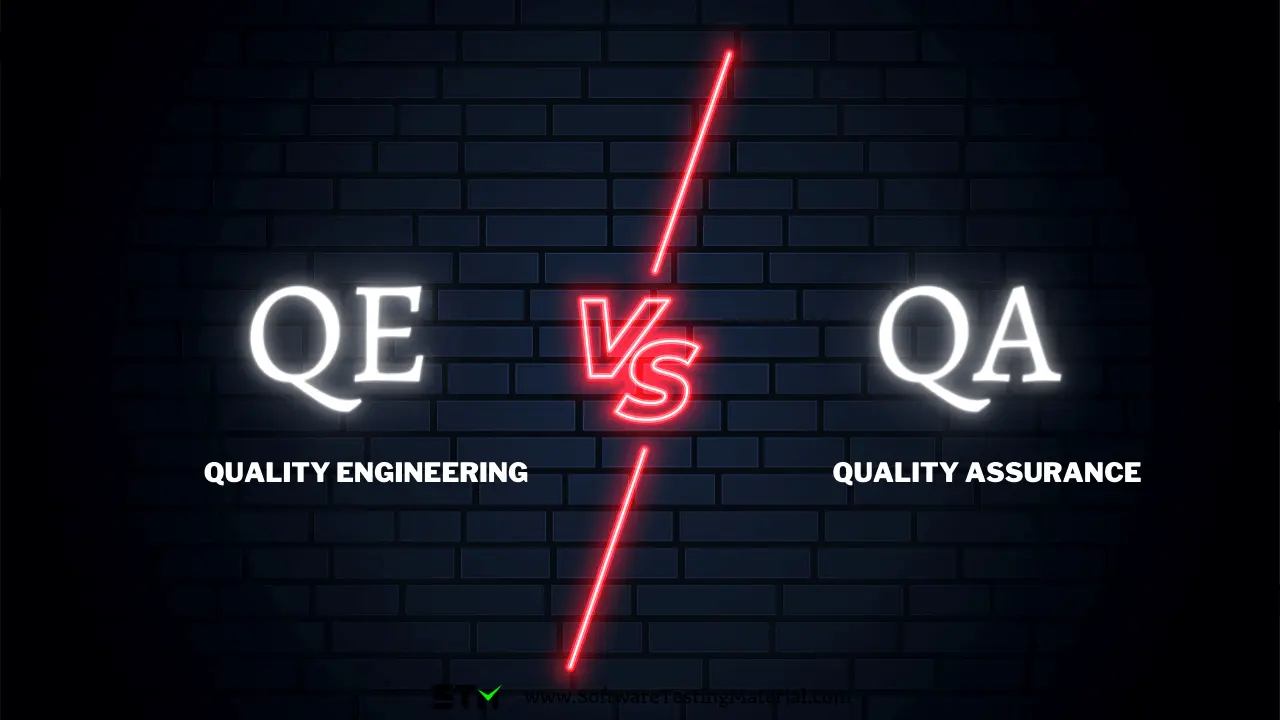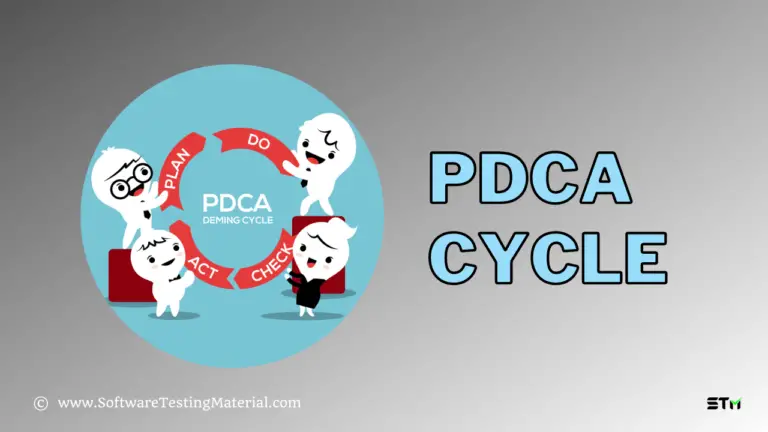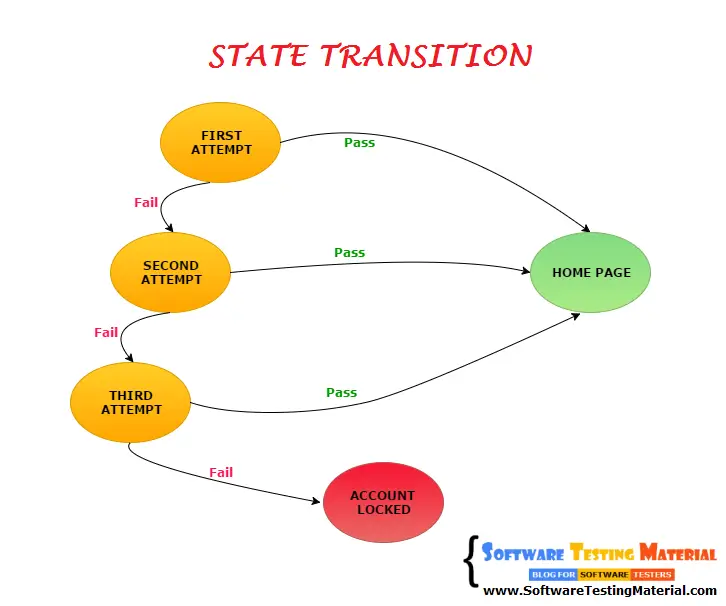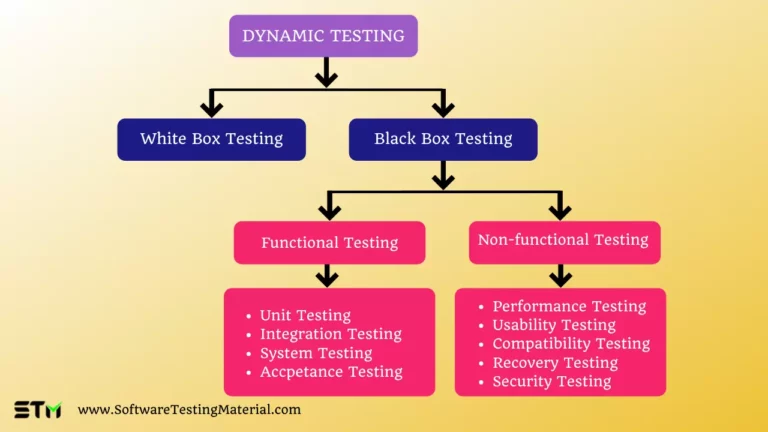Quality Engineering vs. Quality Assurance
Today we are in a time when software development has become more fast-paced and agile. So, it’s very important to introduce robust testing methodologies to test software.
Quality Assurance and Quality Engineering are two crucial and popular testing approaches.
Although the goal of both approaches is the same, to deliver a quality product, they have significant differences.

What is Quality Engineering in Software Development?
Let’s understand the word “Engineering” first; it means “the action of working artfully to bring something about.”
Quality Engineering in Software Development is a process of thoroughly checking product quality at each stage of product development using various latest technologies so that all the stakeholders can get immediate feedback on recent development changes in the product rather than getting surprise defects at the end of the development cycle.
There are various processes involved in Quality Engineering, which we will discuss in detail in the later part of the article.
What is Quality Assurance in Software Development?
On the other hand, Quality Assurance ensures that the developed software meets and complies with the standard predefined requirements.
It focuses on identifying bugs or defects and ensures a quality product is delivered to end-users.
Most often, QA testing was taken up at the end of the SDLC in earlier waterfall models, which could lead to changes in project timelines and even redesigning the entire product.
What’s the difference between QA and QE?
Below are a few key differences between QA and QE:
| Quality Assurance | Quality Engineering |
|---|---|
| QA team is engaged once the product development is completed. | QE works with the development team closely to ensure product quality. |
| QA takes a “one-size-fits-all” approach. | QE focuses on the right testing tools for each development stage. |
| QA is expected to be well-versed in typical SDLC life cycles, such as requirement gathering, test planning, test execution, and defect tracking. | QE must be familiar with servers, platforms, infrastructure, etc. |
| QA performs manual functional testing or basic SQL or Automation Testing. | In addition to what QA does, QE is also responsible for Performance Testing, Security Testing, implementing CI/CD tools, API testing, etc. |
| QA focuses on the quality of the end product. | QEs focus is more Agile. QE puts certain exit criteria at different stages of development. QE provides feedback at different stages; it becomes more reliable and effective rather than getting surprises at the end of the development cycle. |
Why QE?
We are in a time when complex systems are being built daily, including Artificial Intelligence (AI) and Machine Learning models.
With such technological evolution, it has become essential to have better testing methodologies and tools to support advanced testing.
For Example, automation testing was a good skill to have earlier, but it has become a mandatory skill to have in a Quality Analyst.
Let’s understand with an example. Suppose we have been asked to test a simple Login Page. If we follow Quality Assurance as a testing methodology, we would probably test only the functional scenarios. Such as:
- Login with a valid credential.
- Login with an invalid credential.
- Verify that required UI elements are present.
With QE involved, we need to think beyond it. QE covers functional testing as well, not only restricted to it. For Example:
- Security Testing – It’s essential to test the security of the software. Nowadays it’s common to hear about malware attacks, even in big organizations. So Security Testing has become mandatory. Some of the security testing techniques are Vulnerability Scanning, Security Scanning, Penetration Testing, Risk Assessment, Security Auditing, and Ethical Hacking.
- Performance Testing – Another important aspect of software testing is Performance Testing. The number of internet users is growing exponentially daily with the availability of resources. So, it’s very likely that the number of users using the software would also increase simultaneously. As part of the Performance Testing for the Login scenario, QE would try to simulate user interactions with web applications to measure the application’s performance under various intensity loads. Also, In today’s cloud era, system architecture involves complex microservice architecture deployed on AWS, GCP, Azure, etc., which demands more testing on Performance.
- Compatibility Testing – Nowadays, users may access an application from various devices, such as Laptops, Mobiles, and Tablets, and that too operated by multiple operating systems such as Windows, ios, Linux, etc. Hence while testing software products, QE has to think of all the possible devices and operating systems that the users can use. Compatibility Testing plays a crucial role here.
- Continuous Integration and Development – QE works in a rapid feedback manner. As most software development has become Agile, it has become necessary to have a mechanism that tells us whether the recent deployment is having any issues or is all good. QE uses CI/CD tools such as Jenkins Pipeline to Smoke Test the application after the deployment. This gives us confidence whether the recent deployment was acceptable or not.
Why does QE’s role Evolve?
We have discussed in detail what we mean by QE and how it’s different from QA. Now, let’s discuss why QE’s role is being evolved day by day.
- Immediate Feedback: QE sets up CI/CD pipeline for most of the implementation, which automatically triggers the Smoke/Regression test as soon as there is a change deployed. As soon as tests are completed all the stakeholders immediately get feedback on whether the deployment was acceptable or not. This process saves a lot of time for both QA and Development teams.
- Different approaches for different implementations: QE doesn’t work with the “one size fits for all” concept. Based on the implementation happening, QE selects the correct testing tools and testing approach. It has been proven very effective.
- Ownership: The whole software team and every individual working within a team must feel accountable for the quality of the deliverable. Usually, in QE, each one is solely responsible for their deliverables. Any specific area of the software can impact other areas of the software, so the testing partner must be aware of all other aspects of software delivery and their relationship.
- Collaboration and Communication: QE encourages close collaboration between development, testing, and other stakeholders throughout the software development lifecycle. This promotes effective communication, knowledge sharing, and early defect detection. Collaboration helps QA engineers gain a deeper understanding of the software, resulting in more effective and targeted testing.
- Test Automation: QE places a strong focus on test automation. Automated testing can significantly increase testing efficiency, accelerate test execution, and provide quicker feedback on software quality. It enables the execution of repetitive and complex test cases, freeing up QA engineers to focus on more exploratory and critical testing activities.
Why should we transform QA to QE?
Every organization today is trying to achieve its digital transformation goals to be relevant to the current market. It has now become essential to transform from QA to QE because of the following reasons:
#1. Shift-Left Testing
QE follows a shift-left testing approach that helps identify potential issues very early by involving developers and testers in the requirement and design phase. It leads to reducing work, saving time, and enhancing the overall quality of the software.
#2. Data-Driven Quality Analysis
QE leverages data analytics and metrics to gain insights into software quality. Organizations can make informed decisions about quality improvements by collecting and analyzing data related to defects, test coverage, performance, and customer feedback. Data-driven analysis helps identify trends, bottlenecks, and areas for optimization, leading to better overall quality.
#3. Collaboration
QE is a more collaborative approach than QA. From the very beginning of the software development phases, QE is involved with the Business Analysts and Development team to ensure at every step, quality is maintained. Obviously, a successful collaborative team effort always leads to quality products.
#4. Knowledge about the right tool
It’s essential to identify the correct testing tool; we have various tools available such as Selenium, Cypress for web application automation, JMeter for performance testing, Rest Assured, Karate Framework and Postman for API testing, UiPath, UFT for Web as well as Desktop application and so on. QE’s are well versed in these tools and capable of selecting the correct one based on the requirement.
#5. Implement AI and Machine Learning
Today’s applications are very complex and dynamic in nature. Hence, it’s becoming one of the critical skills to have to implement AI and Machine Learning to make our test framework more dynamic in nature. Some of the important features that QE implements using AI and Machine Learning are the auto-healing capability of dynamic web elements during web automation, prediction of defect-prone areas of the software, generating synthetic data, identifying critical test cases, etc. These are advanced implementations that QE is leaning towards day by day.
Conclusion
Quality Assurance has always played an important role in SDLC to ensure quality products. But with the evolution of smarter and more complex products, the old Quality Assurance process is not enough. We also have to be smart enough to deal with such products. As a result, it has become essential to evolve as QE to support DevOps CI/CD process, automation testing, effective collaboration, and early detection of defects to deliver a high-quality product to the end users. Also, continuously improving QE’s nature helps bring new innovations in software testing.






